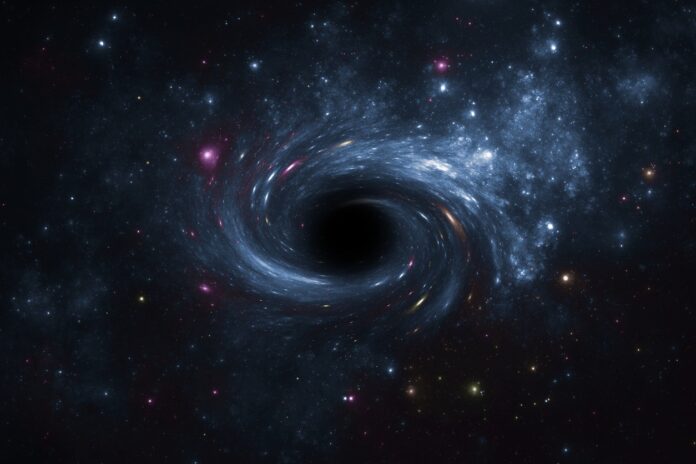An international team of scientists have revealed that black holes can grow additional hair-like structures when spinning fast enough, a discovery that could give new insight into the behaviour of black holes.
Until now black holes have been thought to be fully characterized by just two quantities, mass and spin. For several years physicists have been investigating whether black holes can have additional structures – which would reveal the existence of new fundamental fields.
Researchers from the University of Nottingham collaborated with SISSA and IFPU Institute for Fundamental Physics of the Universe and CNRS & Sorbonne University that has used numerical simulations to show that black holes can spontaneously grow the simplest form of permanent hair (a scalar field) once they start spinning fast enough. The research has been published in Physical Review Letters.
Alexandru Dima, Astrophysicist of SISSA and INFN and first author of the paper explains: “In our work we have considered a wide class of extensions to Einstein’s theory of gravity that make interesting prediction in extreme regimes, such as the surroundings of black holes or neutron stars” says “While previous studies have already provided examples of “hairy” black hole solutions, we have shown for the first time, thanks to numerical simulations, that black holes can spontaneously grow the simplest form of permanent hair (a scalar field) once they start spinning fast enough.”
The researchers also describe the way in which rotation controls the hair growth mechanism. In Einstein’s theory of gravity and many of its extensions, mathematical theorems ensure that black holes cannot sustain hair. They eventually shed it away through the emission of gravitational waves.
However, in the theories under consideration, once the black hole starts rotating faster than a certain threshold hair spontaneously grow, giving the black hole novel features.
Physicists have been investigating possible extensions of General Relativity in order to solve theoretical issues linked to the ongoing search for a quantized theory of gravity or as potential explanations of the puzzles that still await in the “dark side” of gravitational physics, like dark energy or dark matter.







